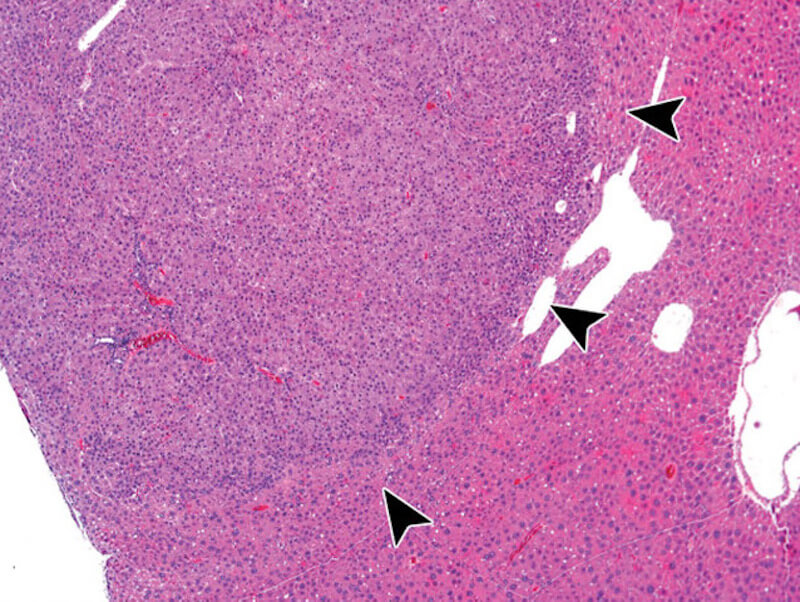A 24-month oral carcinogenicity study of permethrin was conducted by feeding male and female CD-1 mice diets containing concentrations of 0, 20, 500, and 2,000 ppm of permethrin (males) or 0, 20, 2,500, and 5,000 ppm of permethrin (females). After approximately two years on study, surviving mice were sacrificed for the evaluation of chronic toxicity and/or carcinogenicity. An expert panel of pathologists was convened as a Pathology Working Group (PWG) to review coded liver histology sections from male and female mice and to classify all liver neoplasms according to current nomenclature and diagnostic criteria guidelines. The PWG results indicate that permethrin induced a significant dose-dependent increase in the incidence of hepatocellular neoplasms in treated female mice ( p < .01) as well as a nonstatistically significant increase in the incidence of hepatocellular tumors in treated male mice. Given the continuum of the diagnoses of adenoma and carcinoma, and the difficulty in distinguishing some of the lesions, it is appropriate to consider only the combined incidences of hepatocellular tumors (adenoma and/or carcinoma) for biological significance and risk assessment.
Reevaluation of Hepatocellular Neoplasms in CD-1 Mice from a 2-year Oral Carcinogenicity Study with Permethrin
View as PDF
Erin M. Quist, Gary A. Boorman, John M. Cullen, Robert R. Maronpot, Amera K. Remick, James A. Swenberg, Les Freshwater, and Jerry F. Hardisty
View as PDF